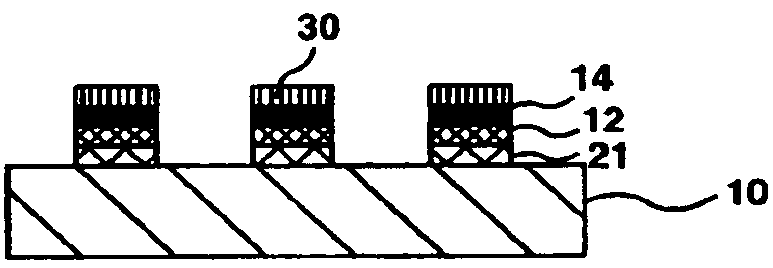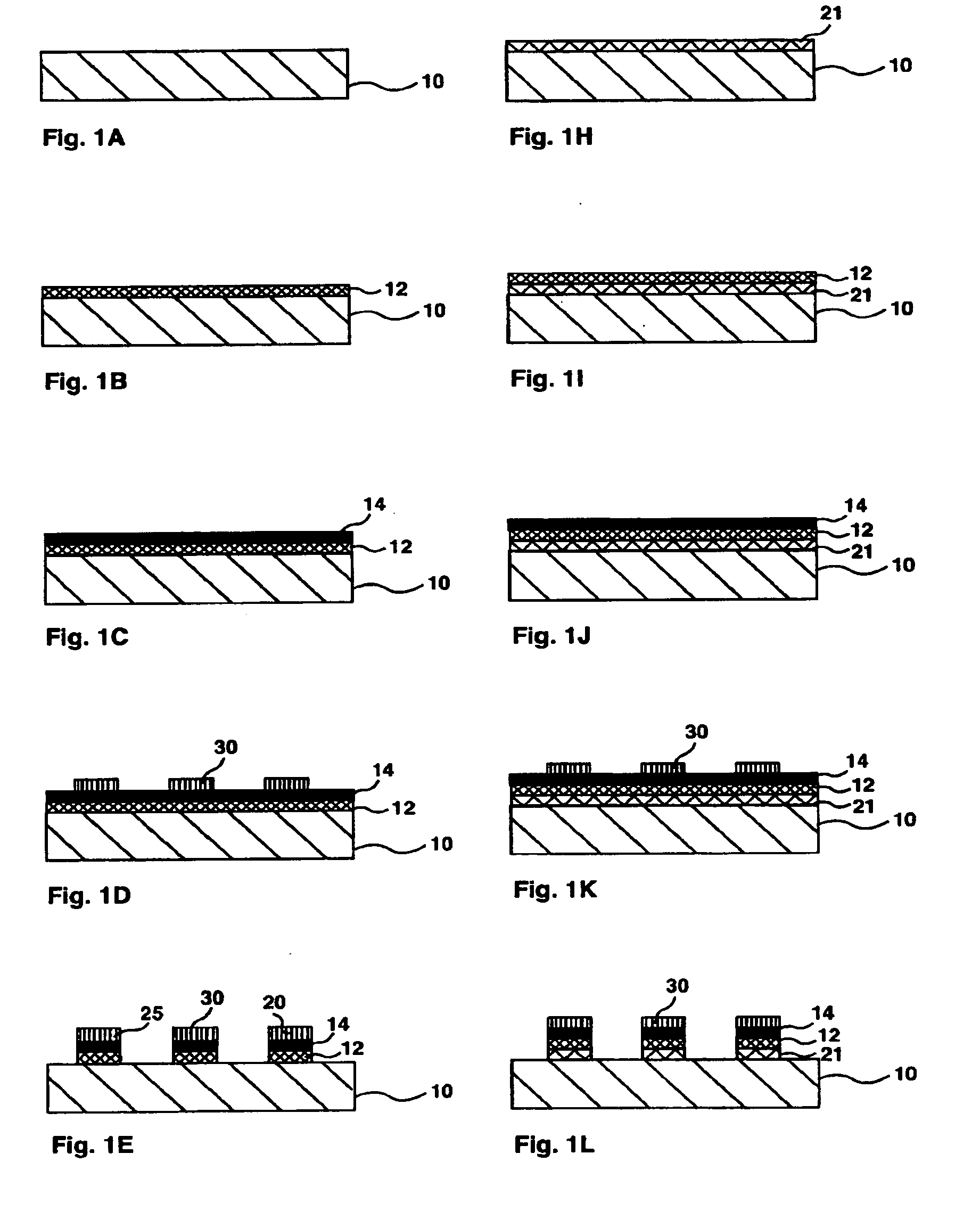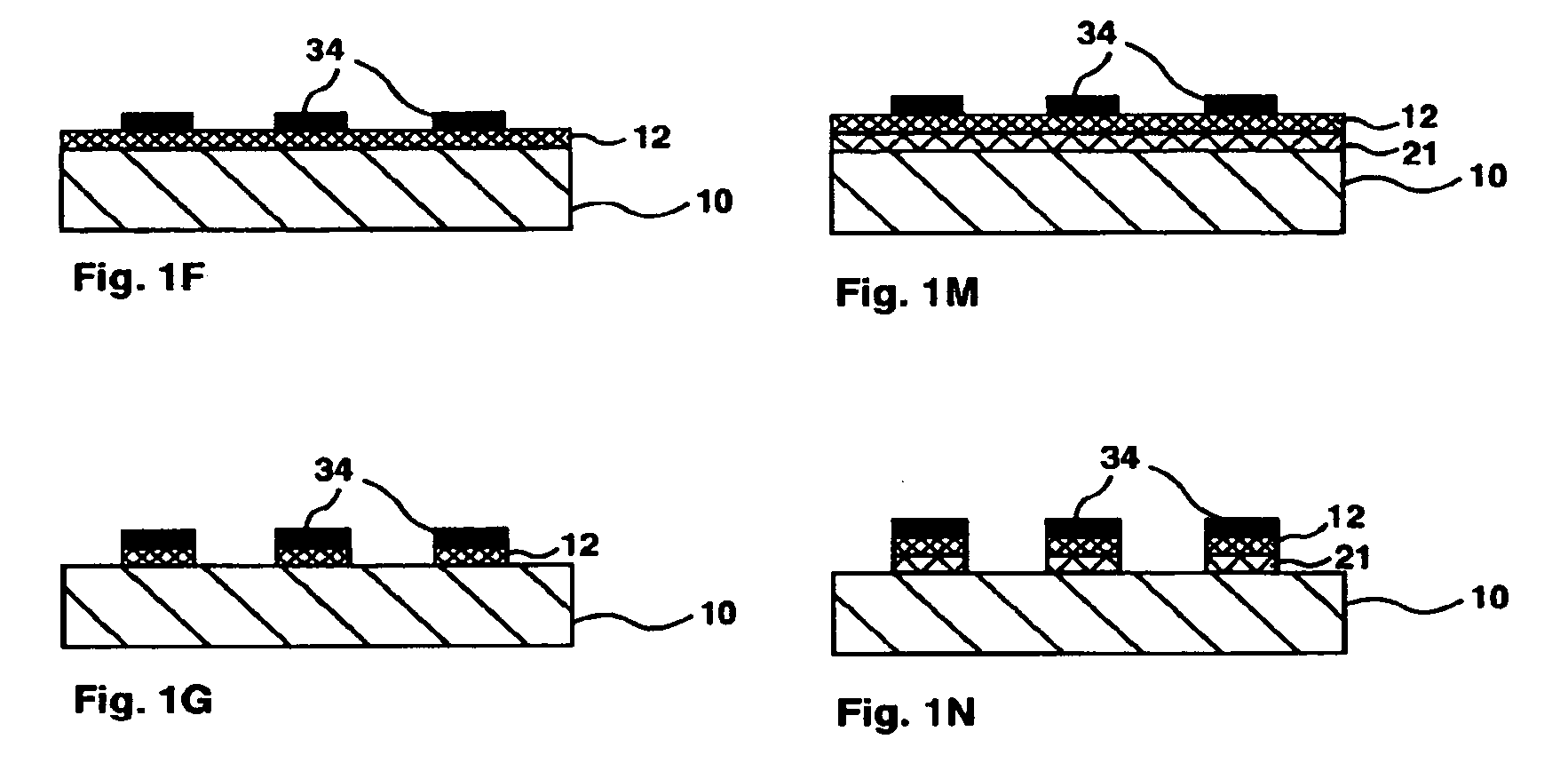Partial Printing Of A Substrate Using Metallization
- Summary
- Abstract
- Description
- Claims
- Application Information
AI Technical Summary
Benefits of technology
Problems solved by technology
Method used
Image
Examples
Embodiment Construction
[0068]The following FIGS. 1A-27G are sequential, diagrammatic cross-sections illustrating the production of panels according to various embodiments of the invention. Each of the four basic methods has several variants. Each of these described method variants or method embodiments result in product embodiments which comprise a substantially imperforate light permeable material, a print pattern comprising a plurality of layers of marking material, one of the layers of marking material being a metallized layer and at least a part of the boundary of one of the layers of marking material being in substantially exact registration with a part of the boundary of another of the layers of marking material.
[0069]FIGS. 1A to 15L illustrate embodiments of the first method, which uses a solvent etch to remove layers of unwanted marking material from outside a resist layer.
[0070]FIG. 1A illustrates a light permeable material 10, typically a transparent material, which is coated with metallized lay...
PUM
| Property | Measurement | Unit |
|---|---|---|
| Thickness | aaaaa | aaaaa |
| Thickness | aaaaa | aaaaa |
| Thickness | aaaaa | aaaaa |
Abstract
Description
Claims
Application Information
 Login to View More
Login to View More - R&D
- Intellectual Property
- Life Sciences
- Materials
- Tech Scout
- Unparalleled Data Quality
- Higher Quality Content
- 60% Fewer Hallucinations
Browse by: Latest US Patents, China's latest patents, Technical Efficacy Thesaurus, Application Domain, Technology Topic, Popular Technical Reports.
© 2025 PatSnap. All rights reserved.Legal|Privacy policy|Modern Slavery Act Transparency Statement|Sitemap|About US| Contact US: help@patsnap.com



